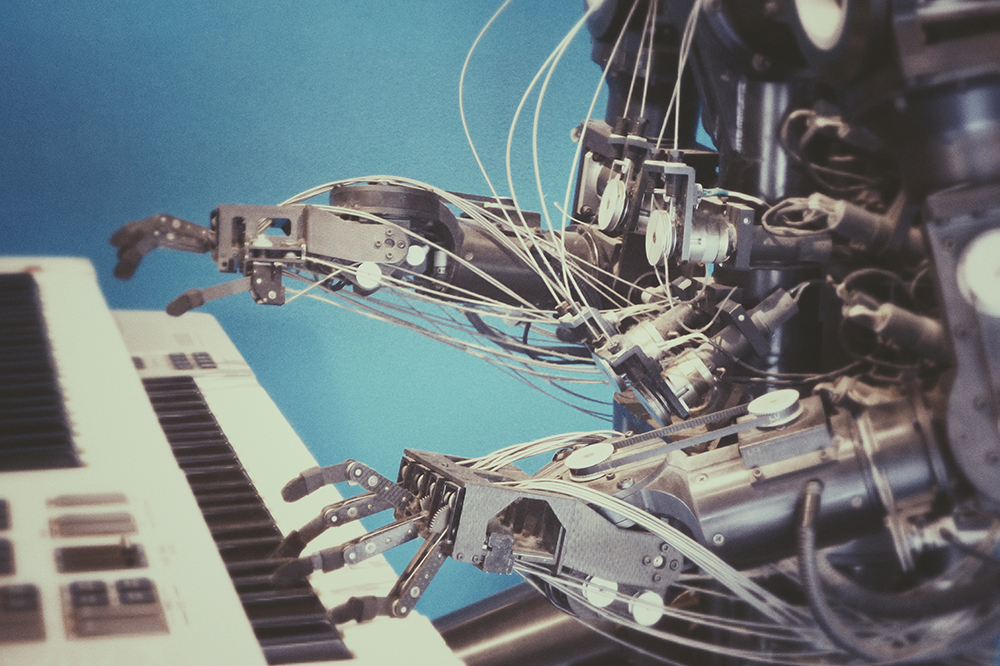Luís Moniz Pereira is one of the best known and most active machine ethicists in the world. Together with his colleague Ari Saptawijaya he wrote the article “From Logic Programming to Machine Ethics” for the “Handbuch Maschinenethik” (“Handbook Machine Ethics”). From the abstract: “This chapter investigates the appropriateness of Logic Programming-based reasoning to machine ethics, an interdisciplinary field of inquiry that emerges from the need of imbuing autonomous agents with the capacity for moral decision making. The first part of the chapter aims at identifying morality viewpoints, as studied in moral philosophy and psychology, which are amenable to computational modeling, and then mapping them to appropriate Logic Programming-based reasoning features. The identified viewpoints are covered by two morality themes: moral permissibility and the dual-process model. In the second part, various Logic Programming-based reasoning features are applied to model these identified morality viewpoints, via classic moral examples taken off-the-shelf from the literature. For this purpose, our QUALM system mainly employs a combination of the Logic Programming features of abduction, updating, and counterfactuals. These features are all supported jointly by Logic Programming tabling mechanisms. The applications are also supported by other existing Logic Programming based systems, featuring preference handling and probabilistic reasoning, which complement QUALM in addressing the morality viewpoints in question. Throughout the chapter, many references to our published work are given, providing further examples and details about each topic. Thus, this chapter can be envisaged as an entry point survey on the employment of Logic Programming for knowledge modelling and technically implementing machine ethics.” (Abstract) Springer VS published the “Handbuch Maschinenethik” in October 2019. Editor is Oliver Bendel (Zurich, Switzerland).
Learning How to Behave
In October 2019 Springer VS published the “Handbuch Maschinenethik” (“Handbook Machine Ethics”) with German and English contributions. Editor is Oliver Bendel (Zurich, Switzerland). One of the articles was written by Bertram F. Malle (Brown University, Rhode Island) and Matthias Scheutz (Tufts University, Massachusetts). From the abstract: “We describe a theoretical framework and recent research on one key aspect of robot ethics: the development and implementation of a robot’s moral competence. As autonomous machines take on increasingly social roles in human communities, these machines need to have some level of moral competence to ensure safety, acceptance, and justified trust. We review the extensive and complex elements of human moral competence and ask how analogous competences could be implemented in a robot. We propose that moral competence consists of five elements, two constituents (moral norms and moral vocabulary) and three activities (moral judgment, moral action, and moral communication). A robot’s computational representations of social and moral norms is a prerequisite for all three moral activities. However, merely programming in advance the vast network of human norms is impossible, so new computational learning algorithms are needed that allow robots to acquire and update the context-specific and graded norms relevant to their domain of deployment. Moral vocabulary is needed primarily for moral communication, which expresses moral judgments of others’ violations and explains one’s own moral violations – to justify them, apologize, or declare intentions to do better. Current robots have at best rudimentary moral competence, but with improved learning and reasoning they may begin to show the kinds of capacities that humans will expect of future social robots.” (Abstract “Handbuch Maschinenethik”). The book is available via www.springer.com.
A Handbook on Machine Ethics
After three years, an ambitious project has come to its preliminary end: The “Handbuch Maschinenethik” (“Handbook Machine Ethics”) (edited by Oliver Bendel) was published by Springer in mid-October 2019. It brings together contributions from leading experts in the fields of machine ethics, robot ethics, technology ethics, technology philosophy and robot law. At the moment it can be downloaded here: link.springer.com/book/10.1007/978-3-658-17483-5 … It has become an extensive, a remarkable, a unique book. In a way, it is a counterpart to American research, which dominates the discipline: Most authors come from Europe and Asia. The editor, who has been involved with information ethics, robotics and machine ethics for 20 years and has been researching machine ethics intensively for eight years, is full of hope that the book will find its place in the standard literature on machine ethics, such as “Moral Machines” (2009) by Wendell Wallach and Colin Allen and “Machine Ethics” (2011) by Michael and Susan Leigh Anderson, and “Programming Machine Ethics” (2016) by Luís Moniz Pereira (with Ari Saptawijaya) and “Grundfragen der Maschinenethik” (2018) by Catrin Misselhorn – both have contributed significantly to the “Handbuch Maschinenethik”. Over the next few days, the book with its 23 chapters and 469 pages will be made available for sale on the Springer website and also in print.
A Markup Language for Moral Machines
A markup language is a machine-readable language for structuring and formatting texts and other data. The best known is the Hypertext Markup Language (HTML). Other well-known artifacts are SSML (for the adaptation of synthetic voices) and AIML (for artificial intelligence applications). We use markup languages to describe properties, affiliations and forms of representation of sections of a text or set of data. This is usually done by marking them with tags. In addition to tags, attributes and values can also be important. A student paper at the School of Business FHNW will describe and compare known markup languages. It will examine whether there is room for further artifacts of this kind. A markup language, which would be suitable for the morality in the written and spoken as well as the morally adequate display of pictures, videos and animations and the playing of sounds, could be called MOML (Morality Markup Language). Is such a language possible and helpful? Can it be used for moral machines? The paper will also deal with this. The supervisor of the project, which will last until the end of the year, is Prof. Dr. Oliver Bendel. Since 2012, he and his teams have created formulas and annotated decision trees for moral machines and a number of moral machines themselves, such as GOODBOT, LIEBOT, BESTBOT, and LADYBIRD.
The Future of Autonomous Driving
Driving in cities is a very complex matter. There are several reasons for this: You have to judge hundreds of objects and events at all times. You have to communicate with people. And you should be able to change decisions spontaneously, for example because you remember that you have to buy something. That’s a bad prospect for an autonomous car. Of course it can do some tricks: It can drive very slowly. It can use virtual tracks or special lanes and signals and sounds. A bus or shuttle is able to use such tricks. But hardly a car. Autonomous individual transport in cities will only be possible if the cities are redesigned. This has been done a few decades ago. And it wasn’t a good idea at all. So don’t let autonomous cars drive in the cities, but let them drive on the highways. Should autonomous cars make moral decisions about the lives and deaths of pedestrians and cyclists? They should better not. Moral machines are a valuable innovation in certain contexts. But not in the traffic of cities. Pedestrians and cyclists rarely get onto the highway. There are many reasons why we should allow autonomous cars only there.
The System that Detects Fear
Amazon Rekognition is a well-known software for facial recognition, including emotion detection. It is used in the BESTBOT, a moral machine that hides an immoral machine. The immoral is precisely caused by facial recognition, which endangers the privacy of the user and his or her informational autonomy. The project is intended not least to draw attention to this risk. Amazon announced on 12 August 2019 that it has improved and expanded its system: “Today, we are launching accuracy and functionality improvements to our face analysis features. Face analysis generates metadata about detected faces in the form of gender, age range, emotions, attributes such as ‘Smile’, face pose, face image quality and face landmarks. With this release, we have further improved the accuracy of gender identification. In addition, we have improved accuracy for emotion detection (for all 7 emotions: ‘Happy’, ‘Sad’, ‘Angry’, ‘Surprised’, ‘Disgusted’, ‘Calm’ and ‘Confused’) and added a new emotion: ‘Fear’.” (Amazon, 12 August 2019) Because the BESTBOT accesses other systems such as MS Face API and Kairos, it can already recognize fear. So the change at Amazon means no change for this artifact of machine ethics.
Conversational Agents: Acting on the Wave of Research and Development
The papers of the CHI 2019 workshop “Conversational Agents: Acting on the Wave of Research and Development” (Glasgow, 5 May 2019) are now listed on convagents.org. The extended abstract by Oliver Bendel (School of Business FHNW) entitled “Chatbots as Moral and Immoral Machines” can be downloaded here. The workshop brought together experts from all over the world who are working on the basics of chatbots and voicebots and are implementing them in different ways. Companies such as Microsoft, Mozilla and Salesforce were also present. Approximately 40 extended abstracts were submitted. On 6 May, a bagpipe player opened the four-day conference following the 35 workshops. Dr. Aleks Krotoski, Pillowfort Productions, gave the first keynote. One of the paper sessions in the morning was dedicated to the topic “Values and Design”. All in all, both classical specific fields of applied ethics and the young discipline of machine ethics were represented at the conference. More information via chi2019.acm.org.
Ethical and Statistical Considerations in Models of Moral Judgments
Torty Sivill works at the Computer Science Department, University of Bristol. In August 2019 she published the article “Ethical and Statistical Considerations in Models of Moral Judgments”. “This work extends recent advancements in computational models of moral decision making by using mathematical and philosophical theory to suggest adaptations to state of the art. It demonstrates the importance of model assumptions and considers alternatives to the normal distribution when modeling ethical principles. We show how the ethical theories, utilitarianism and deontology can be embedded into informative prior distributions. We continue to expand the state of the art to consider ethical dilemmas beyond the Trolley Problem and show the adaptations needed to address this complexity. The adaptations made in this work are not solely intended to improve recent models but aim to raise awareness of the importance of interpreting results relative to assumptions made, either implicitly or explicitly, in model construction.” (Abstract) The article can be accessed via https://www.frontiersin.org/articles/10.3389/frobt.2019.00039/full.
The Relationship between Artificial Intelligence and Machine Ethics
Artificial intelligence has human or animal intelligence as a reference and attempts to represent it in certain aspects. It can also try to deviate from human or animal intelligence, for example by solving problems differently with its systems. Machine ethics is dedicated to machine morality, producing it and investigating it. Whether one likes the concepts and methods of machine ethics or not, one must acknowledge that novel autonomous machines emerge that appear more complete than earlier ones in a certain sense. It is almost surprising that artificial morality did not join artificial intelligence much earlier. Especially machines that simulate human intelligence and human morality for manageable areas of application seem to be a good idea. But what if a superintelligence with a supermorality forms a new species superior to ours? That’s science fiction, of course. But also something that some scientists want to achieve. Basically, it’s important to clarify terms and explain their connections. This is done in a graphics that was published in July 2019 on informationsethik.net and is linked here.
Development of a Morality Menu
Machine ethics produces moral and immoral machines. The morality is usually fixed, e.g. by programmed meta-rules and rules. The machine is thus capable of certain actions, not others. However, another approach is the morality menu (MOME for short). With this, the owner or user transfers his or her own morality onto the machine. The machine behaves in the same way as he or she would behave, in detail. Together with his teams, Prof. Dr. Oliver Bendel developed several artifacts of machine ethics at his university from 2013 to 2018. For one of them, he designed a morality menu that has not yet been implemented. Another concept exists for a virtual assistant that can make reservations and orders for its owner more or less independently. In the article “The Morality Menu” the author introduces the idea of the morality menu in the context of two concrete machines. Then he discusses advantages and disadvantages and presents possibilities for improvement. A morality menu can be a valuable extension for certain moral machines. You can download the article here. In 2019, a morality menu for a robot will be developed at the School of Business FHNW.









